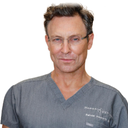Making an aesthetic assessment regarding the lower eyelid and upper midface. Transition can be complex and even professionals can get confused when trying to figure out what the primary underlying problem is. In your case it would be helpful if you could point out exactly where the area of concern is. Perhaps Take pictures and pointing with a Q-tip to the area of concern or put circles on the pictures showing the exact area that bothers you. I don’t understand why you had dissolving injections, but perhaps the thought was injections had been done incorrectly. In regards to fillers, I cannot overstate the importance of working with people who have a proven track record and have a mastered this type of work, which usually takes decades. Working with facial fillers is inherently fairly simplistic, but getting consistent quality. Masterful outcomes is something on the a few are able to ever accomplish. It’s a bit like art there are only a handful of true masters.

